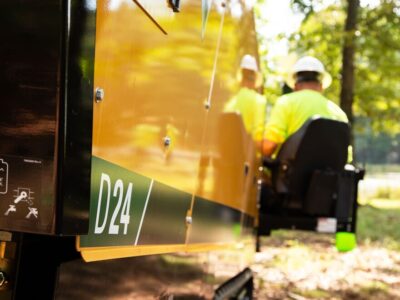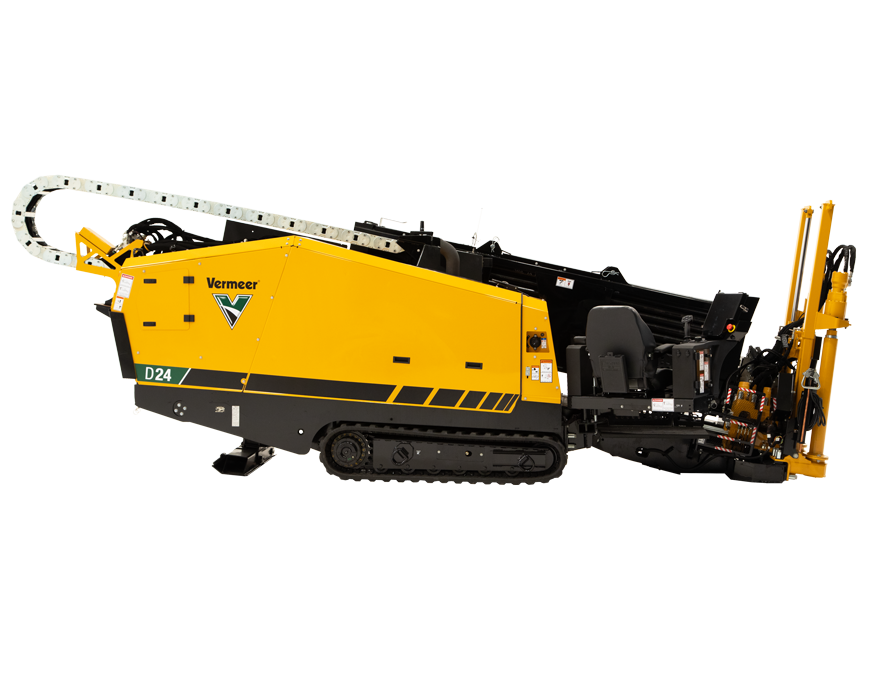Vermeer has been a market leader in the horizontal directional drill (HDD) market since the D7 was released in 1991. Since then, jobsite and operator needs have changed significantly. The evolving utility industry is what led Vermeer to develop the Next Generation of utility horizontal directional drills.
Not only is there a new machine, but new HDD nomenclature, or naming convention changes, for future models.
The first model of the Next Generation of utility HDDs was officially launched on Nov. 12, 2024. This change is new for utility drills but has been implemented already in the pipeline models, starting with the D550 horizontal directional drill. This new nomenclature will be aligned throughout both utility and pipeline models in the future.
See why there is a new drill, nomenclature changes for Vermeer HDDs and what the “Next Generation” of drills will mean for operators.
Introducing the new D24 horizontal directional drill
What drill is the new D24 replacing?
The D24 is replacing the iconic D23x30 S3 horizontal directional drill.
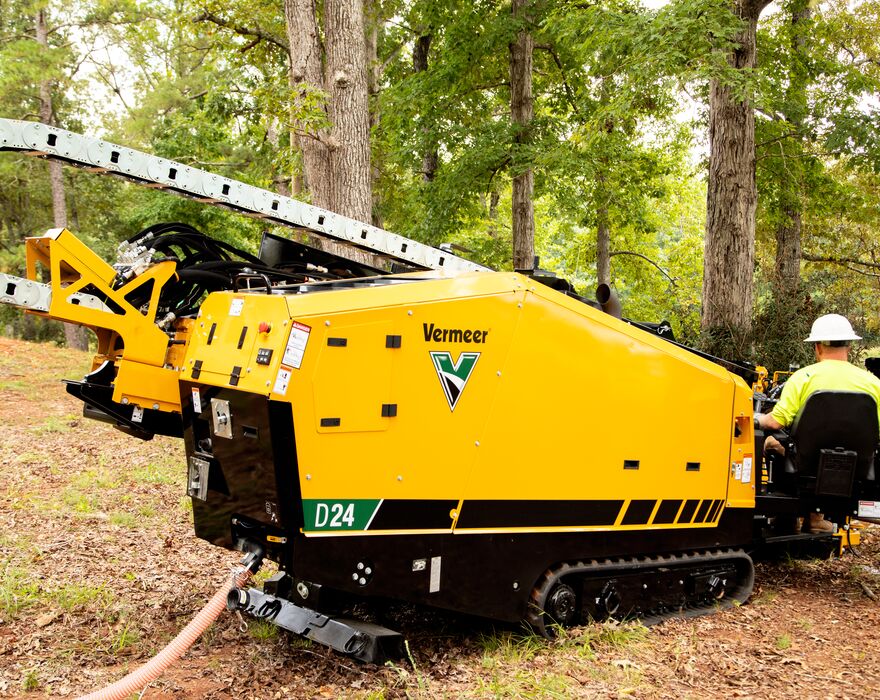
“Replacing” in this instance means the D23x30 S3 will be retired, and the D24 will take its place in the Vermeer HDD lineup. The D24 is a versatile machine, capable of similar jobsite applications to the D23x30 S3, but with enhanced features to improve machine reliability and productivity.
Why is the D23x30 S3 being retired?
The D23x30 S3 is being retired over the coming months to make room for the Next Generation utility HDD, the D24.
Enhancing what made its predecessor the D23x30 S3 a legendary drill, the D24 adds Next Generation technology, automated features and patented design elements. These improvements can help operators drill longer and tackle tough ground conditions with ease. The Utility Infrastructure team at Vermeer knows that maintaining a compact footprint was essential as jobsites continue to get smaller, so the narrow machine size is being incorporated in the D24.
What new technology is on the D24?
The on-rig diagnostics on the D24 have been redesigned and improved. With Next Gen on-rig diagnostics, operators can potentially reduce diagnostic time and get back to the job faster.
For operators, this means that you now have a detailed onboard service tool at your fingertips — giving more access to machine data that can help you make key decisions around servicing your drill.
If an issue occurs with your horizontal directional drill, a message will appear on your dashboard. This message can provide details on the issue and if applicable, steps to take to troubleshoot the problem. Before this technology, most of this functionality and information would require a dealership technician to come to the jobsite and connect a computer. Now, you can troubleshoot many issues on the jobsite and get back to drilling faster.
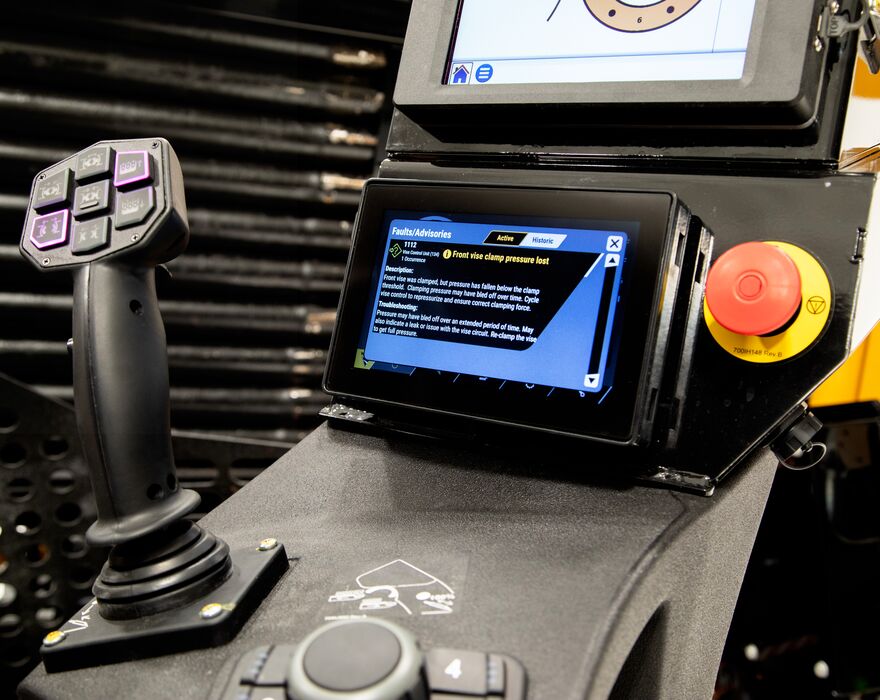
Additionally, this technology can better connect each unit to its dealership location. With better connectivity, your local Vermeer dealer can have clear insights into any issues that may arise with your machine.
What will operator training look like on the D24?
A market need that has been voiced was the desire for operator training assistance and more efficient equipment to help new operators onboard and improve productivity. With the lack of skilled operators available, effectively training new operators is essential.
That’s why automated rod exchange (ARE) was developed, which will be offered on select Next Gen drill models. ARE is designed to consolidate the rod change process with a single push of a button. With the labor challenges many drill crews are facing, this technology was developed to help train new operators on the specific sequence that needs done to drill successfully. Most experienced drillers know that doing the rod exchange process incorrectly can quickly wear parts and components, so having this technology can help reduce parts and service costs.
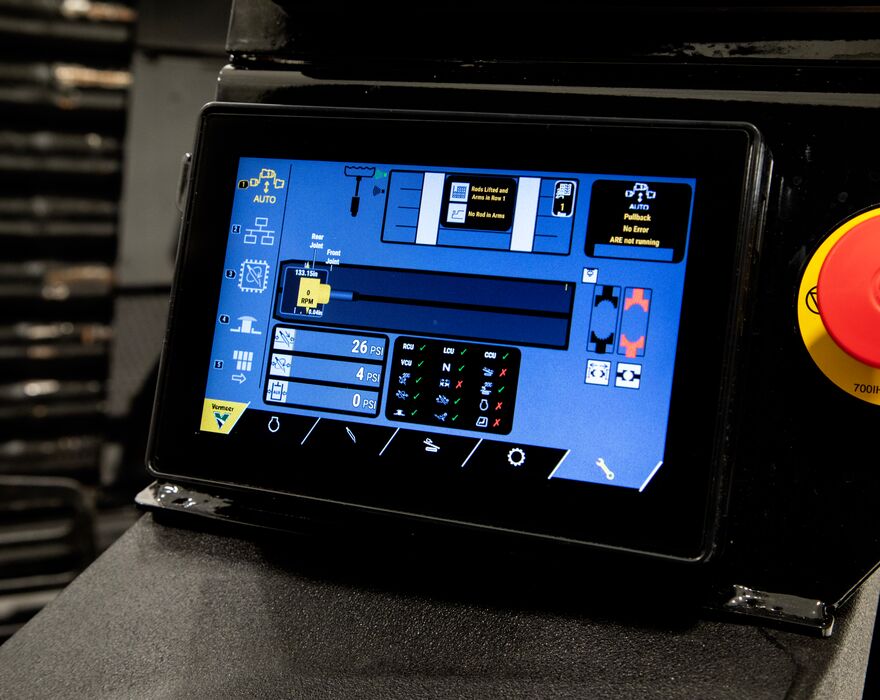
What are the new features of the new D24 drill?
A productivity improvement made on the D24 is a higher rod box capacity compared to its predecessor. With the D24, operators can now have 480 ft (146 m) of rod on their machine at once. This allows operators to work on a job longer without changing the boxes or manually adding more rod.
Vise die maintenance and breakouts are simpler with the new design of the D24. A patented sliding, open-side vise allows improved visibility to the rod joint. Operators also have better access to the vise die when die cleaning or replacements are needed.
The flow of the mud pump has been increased on the D24. With more flow from the onboard mud pump at 45 gpm (170 L), operators can pull a reamer faster in some ground conditions.
Component improvements have been made throughout the D24. The engineers at Vermeer have worked to enhance machine hydraulics, electrical systems and the power train. By enhancing these components, this will help keep the machine running longer on the jobsite.
The stakedown speed has been improved in Next Gen models, which is especially beneficial in challenging ground conditions. When working in concrete, asphalt or compacted soil you can insert stakedowns faster than previous drill models. When operators can insert stakedowns faster, your crews can get the jobsite set up quicker and begin drilling.
Can I still buy a D23x30 S3?
The D23x30 S3 will no longer be in production after April 2025.
Operators with the D23x30 S3 can still obtain parts, service and training from their local Vermeer dealership. The D23x30 S3 product page will still be available to view online, as well as all content related to the D23x30 S3 on YouTube and Pro Tips for additional machine information.
Is there still a D24x40 S3?
Yes, the D24x40 S3 and D24 are two separate machines, with different specifications and features to be used for distinct applications. The D24 is considered a part of the Next Generation of utility drills for Vermeer, whereas the D24x40 S3 is included in the S3 lineup of drills.
Changes to the Vermeer directional drill lineup
The Vermeer model naming convention, also called nomenclature, is changing in a few different ways. Current drill models will not be impacted by this change — only future drill models.
Why is Vermeer changing its drill nomenclature?
Vermeer is aiming to simplify the drill nomenclature throughout the model lineup.
There are a few reasons Vermeer is changing drill nomenclature:
- Simplify the nomenclature to be clear what the drill’s capabilities are
- Better align the nomenclature with the machines class size
- Differentiate Next Gen models from previous drill models
The simplification of nomenclature began with a pipeline drill, the D550 HDD. When looking at a Next Gen drill, it should be easier to determine what the drills capabilities are just by looking at the model name. Even if the specification does not exactly match what is in the model name, the model name will represent what class size the drill is in.
Next, is to better align the drill with the class size. By doing this, operators can easily determine what the thrust/pullback capabilities are of the drill. This can help to compare against competitive drills or simply models throughout the Vermeer lineup.
By converting the model name from two numbers to one number, it will be clear which models in the Vermeer HDD lineup are considered Next Gen drills.

Why do the Next Gen drills have one number in the model name, rather than two?
While listening to operator feedback, it was discovered that the key specification to determining the right model for their fleet was thrust/pullback, compared to rotational torque. It is essential to consider the thrust/pullback of a drill so operators can better determine what jobsites they can effectively work on.
Although rotational torque is important to keep in mind, operators expressed more value to the thrust/pullback specification when comparing competitive drill models. From this feedback, all Next Generation drills will include one model number to indicate the thrust/pullback.
Does the D24 have 24,000 lb of thrust/pullback?
Yes, the D24 has just over 24,000 lb of thrust/pullback — it’s equipped for maximum thrust/pullback at 24,700 lb (110 kN)
With the new D24, the components used in the thrust motors are similar to what is used on the D24x40 S3 and larger models. While designing the thrust circuit, Vermeer engineers were tasked with balancing the thrust/pullback force, with the thrust/pullback speed. While doing this, vendor pressure and flow limits had to be considered as well.
Thrust/pullback speed directly impacts productivity on the jobsite, which is why Vermeer engineers have focused on that while designing the D24. The encoder on the drill has been tested and fine-tuned on slow down and stop points to maximize speed.
While the thrust/pullback rating is similar to its predecessor, the D23x30 S3, Vermeer is confident that the D24 will meet the performance and reliability standards that today’s operators require. This confidence is backed by a 3-year, 3,000-hour OEM extended warranty program.
The Next Generation of Vermeer directional drills
What does “Next Gen” mean?
Vermeer is constantly striving to create better equipment for operators through cutting-edge technology and innovative features.
The Next Generation, or Next Gen, horizontal directional drills will be based on everything that made Vermeer a leader in the HDD market since the 1990’s — but with added machine improvements, technology and features.
With the increasing number of utilities going underground, a reimagined machine is needed to do more work per day. The D24 is capable of a variety of product installations like telecommunications, water, sewer, gas and power — making this machine an extremely versatile addition to your fleet.
Next Gen drills will be focused on machine reliability, advanced technology and ease of use — all while maintaining a narrow footprint. While jobsites change around the world, the equipment being used needs to change with it.
That’s why the Next Gen of horizontal directional drills are redesigned for what’s next.
To learn more about Next Gen horizontal directional drills, get in touch with your local Vermeer dealer.
Vermeer Corporation reserves the right to make changes in engineering, design and specifications; add improvements; or discontinue manufacturing at any time without notice or obligation. Equipment shown is for illustrative purposes only and may display optional accessories or components specific to their global region. Please contact your local Vermeer dealer for more information on machine specifications.
Vermeer, the Vermeer logo and Vermeer Confidence Plus are trademarks of Vermeer Manufacturing Company in the U.S. and/or other countries.
© 2024 Vermeer Corporation. All Rights Reserved.
